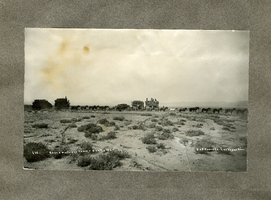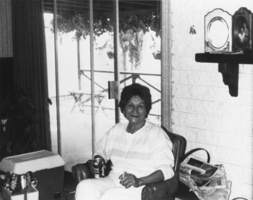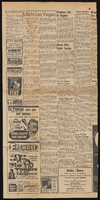Search the Special Collections and Archives Portal
Search Results
Jim and Effie Spicer Papers
Identifier
Abstract
The Jim and Effie Spicer Papers (1979-1982) contain two chapters from the book The History of Pahrump Valley, which talks about the Spicers, newspaper clippings, and a transcribed copy of the diary of Jim Milligan, a miner from Nye County, Nevada.
Archival Collection

Photograph of horse teams and wagonloads of freight in the desert, 1900-1925
Date
Archival Collection
Description
Image
Denver, John
John Denver (1943-1997) was a popular country-folk singer-songwriter of the 1970s and was also known for his work as an actor, activist, and humanitarian. His popularity brought him to many different places including the Harrah’s Lake Tahoe property, where he performed along the likes of Frank Sinatra and hosted events like the Celebrity Ski Classics.
Person

Dolly Strozzi Gillette: photographic print
Date
Archival Collection
Description
From the Nye County, Nevada Photograph Collection (PH-00221) -- Series VII. Other areas in Nye County -- Subseries VII.K. Miscellaneous.
Image

Interview with Richard Van Nutley, November 8, 2004
Date
Archival Collection
Description
Text

Interview with James Donald Merlino, November 7, 2004
Date
Archival Collection
Description
Text

Interview with Thornton Duard (T.D.) Barnes, January 12, 2007
Date
Archival Collection
Description
Text
Albert E. Wile Papers
Identifier
Abstract
The Albert E. Wile Papers (1941-1973) contain the papers of Albert Wile, who served as a police captain in Las Vegas, Nevada in the 1940s. Wile oversaw the city jail; his papers include correspondence from and about inmates and inventories and records of the Las Vegas City Jail. It also includes personal correspondence of Wile and some newspaper clippings about law enforcement in Las Vegas and North Las Vegas, Nevada.
Archival Collection

